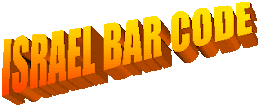A resume is a one- to two-page document summarizing your career objectives, professional experiences and achievements, and educational background. The heading of the resume should contain your name, address and contact information. The body of the resume should be broken into the following sections: career objective, profile/summary, professional experience, achievements, scholastics, and references. Your career objective should be brief, up to two sentences; it should give your potential employers an idea of how you wish to move forward in your professional life. A concise profile or a summary should discuss who you are and how your skills and experience best apply to the job you are interested in. The summary, as well as other parts of your resume, should not contain personal information that discloses ethnicity, sexual orientation, marital status, age, living situations, or any other personal information that is not directly related to your career. Personal profile/summary should only contain a few well-written sentences that convey what you can bring to the table in terms of the specific job. Use this section to attract the employer’s attention, but don’t go overboard in trying to be creative – stay professional. Your experience listing should include information on one to five jobs you’ve held, starting with your current or last job, and listing previous positions in chronological order. Your education should include college, graduate and post-graduate work, as well as any courses or professional certifications that are relevant to your career development. Achievements, volunteer positions, publications and interests should only be listed if they apply to your professional work experience References should be listed if requested; best practices suggest not to list generic statements about references being available upon request as this is understood.
Curricula vitae or CV is a collection of documents that describe your education and professional history, focusing on your achievements and showcasing higher level of detail than a resume. People most typically using CV as form of application are seeking positions in education, entrance into graduate and post-graduate programs, or research, and they are required to discuss their professional philosophies. While resumes are often limited to one or two pages, CV is a compilation of documents, has no length limit and extends over at least several pages (most frequently four or five pages, but can be more based on experience and achievements). A CV contains similar information as your resume, but places higher emphasis on education and scholastic accomplishments. Unlike your resume, a CV would contain information on scholarships you may have received, texts or research you have completed and published, grants you received, community and volunteer work, teaching philosophy, etc. You will begin by listing your career objective, in summary form, to showcase your commitment to your goals and actions you are willing to take to achieve them. If you are applying for a teaching position, give a brief outline of your reaching philosophy. Immediately following your goals, list your achievements, highlighting your education first. Here, you can mention your thesis project or dissertation, courses that support your career objective, publications and research (in progress or completed), certifications, studies abroad, languages, etc. Your experience should be included next, focusing on the work history that supports your career objective. This should conclude your CV.
If you are unsure which form of application to use, do the appropriate research and create a resume or CV that best fits the format commonly accepted in your industry.
Curricula vitae or CV is a collection of documents that describe your education and professional history, focusing on your achievements and showcasing higher level of detail than a resume. People most typically using CV as form of application are seeking positions in education, entrance into graduate and post-graduate programs, or research, and they are required to discuss their professional philosophies. While resumes are often limited to one or two pages, CV is a compilation of documents, has no length limit and extends over at least several pages (most frequently four or five pages, but can be more based on experience and achievements). A CV contains similar information as your resume, but places higher emphasis on education and scholastic accomplishments. Unlike your resume, a CV would contain information on scholarships you may have received, texts or research you have completed and published, grants you received, community and volunteer work, teaching philosophy, etc. You will begin by listing your career objective, in summary form, to showcase your commitment to your goals and actions you are willing to take to achieve them. If you are applying for a teaching position, give a brief outline of your reaching philosophy. Immediately following your goals, list your achievements, highlighting your education first. Here, you can mention your thesis project or dissertation, courses that support your career objective, publications and research (in progress or completed), certifications, studies abroad, languages, etc. Your experience should be included next, focusing on the work history that supports your career objective. This should conclude your CV.
If you are unsure which form of application to use, do the appropriate research and create a resume or CV that best fits the format commonly accepted in your industry.



No comments:
Post a Comment